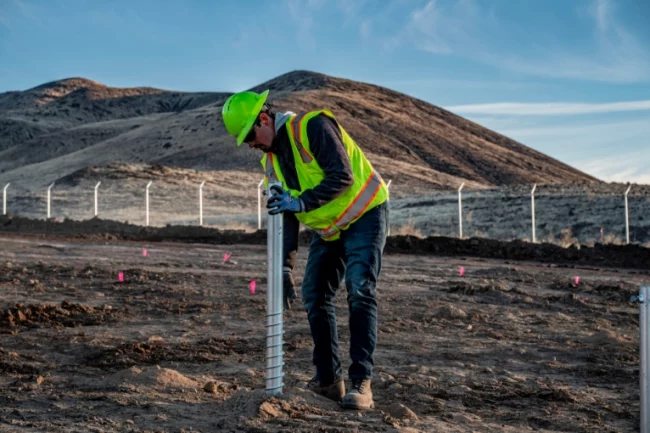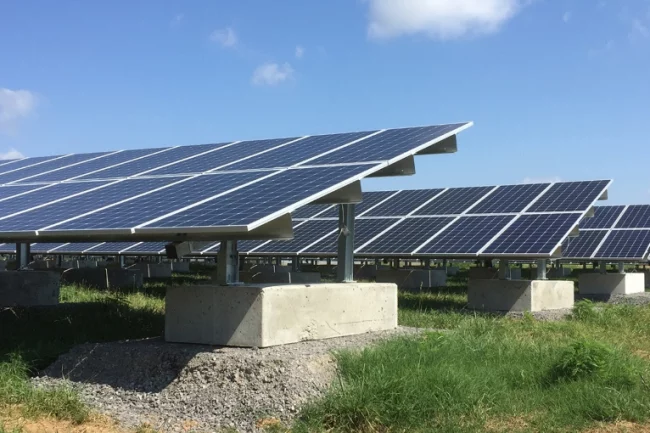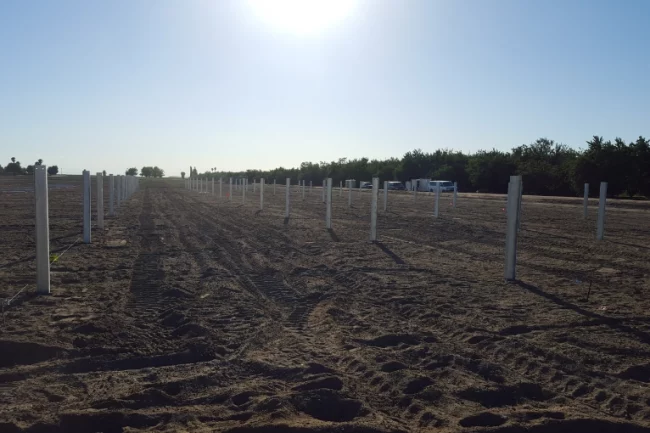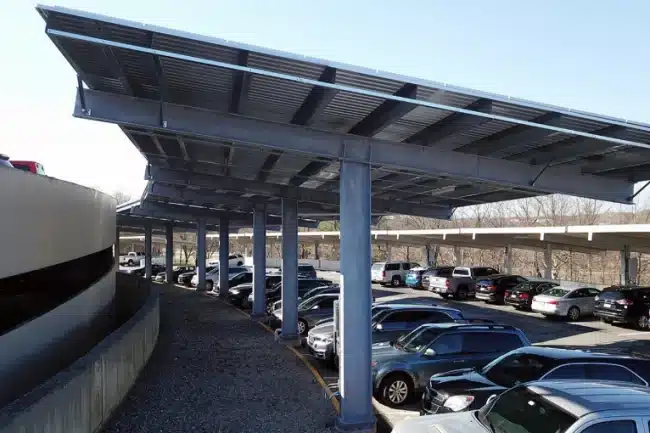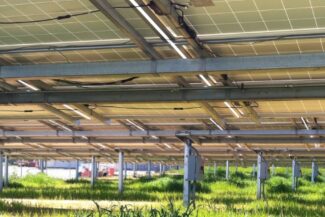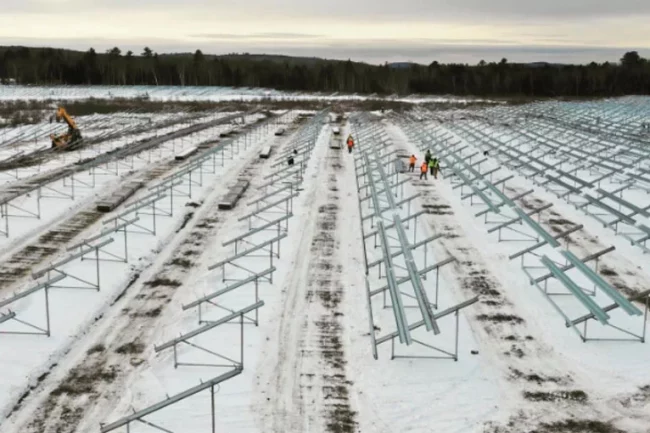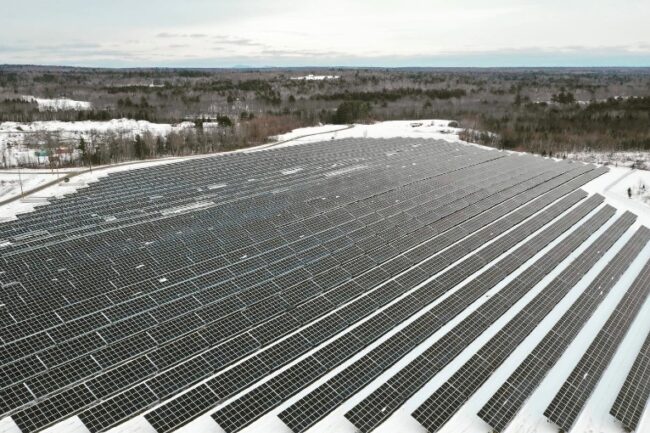This article was featured in PV Magazine – USA
Comparing the benefits and costs of ground screws vs. piles for utility and C&I systems.
Developers or contractors typically must identify their choice of foundation before choosing their racking partner, sometimes even before completing the required extensive geotechnical assessments.
But picking the wrong foundation can leave your project dead in the water.
Each project’s unique profile contributes to understanding the financial and schedule implications of different foundations; a site fraught with rocks, boulders, or steep slopes poses different risks than a soft site. And an owner’s or contractor’s risk tolerance shifts depending on project financials and construction time of year. End-of-year projects are driven by compressed deadlines to get systems online in time to meet PPA production schedules. Others may have more time flexibility but face tighter budget constraints. The amount of risk developers are able to absorb varies and requires a case-by-case assessment.
Trawling for value across imperfect sites
Developers know all too well that “perfect” sites come at a price premium. Consequently, they’ve turned to constructing PV on rocky, hilly terrain to take advantage of the higher margins these discounted parcels can offer. While these opportunities may look lucrative at the start, unforeseen construction issues can make waves, turning a good project bad.
The trick is figuring out how to weigh the costs and benefits properly to pencil out strong projects able to deliver the best returns.
Selecting the right ground-mount foundation is key to optimizing a project’s cost and risk profile. On rockier, more rugged sites, refusal risks associated with hard soils, caliche, boulders, and other unexpected subterranean conditions must be considered. But even premium sites can present unique factors that carry varying ramifications for schedules and budgets.
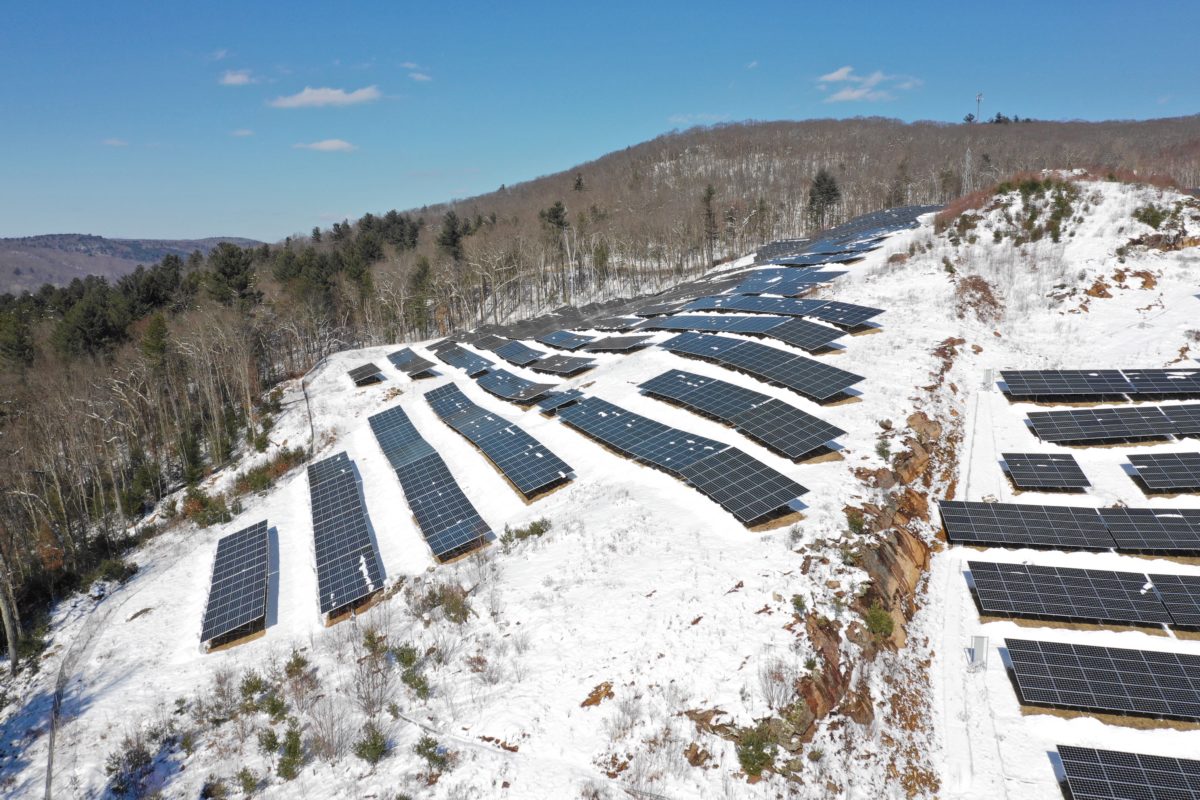
This solar site is atop a rocky hillside in Ware, Massachusetts where ground screws were installed to support the 5 MW fixed-tilt system in tough soil conditions prone to frost heave and heavy snow loads.
Tacking between ground screws and pile foundations
There are costs and advantages to both pile foundations and ground screws.
Ground screws demand higher up-front material and construction costs but eliminate 100% of the refusal risks, minimize land grading, and slash other civil expenses. Paired with adaptable racking designed for flexible land use, ground screws can deliver reliable returns from unreliable sites.
On the flip side, pile foundations are the standard option for cost-effective PV. From a material and construction standpoint, they can be deployed quickly and reliably — on typical sites. In rugged or sloped terrain or in unpredictable conditions, however, pile foundations can leave your project high and dry, presenting costly and schedule-derailing refusals.
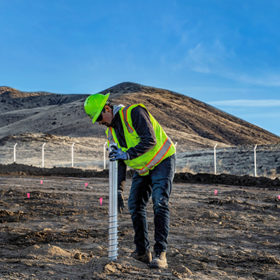
Ground screw foundation on the left and driven pile foundation on the right.
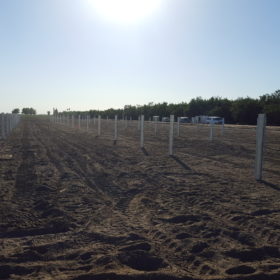
Digging deep to chart the right course
We brought together combined experience and field knowledge of seasoned engineers to compare two 10-MW sites — one with limited slopes and soft soil and the other with a more rugged, rocky profile that poses high refusal risks. For both sites, the team compared component material costs, installation costs, and time using either piles or ground screws.
The team first defined a baseline to identify the resources required to deploy each type of foundation. It then assessed the cost and schedule impact of remediating piles driven to refusal using different methods, synthesizing data for a high-refusal site with 50% refusals. The goal was to identify a break-even point within that environment above which ground screws would deliver better results.
At first glance, ground screw prices are higher than pile systems; screws cost 26% more. But screws are faster to deploy — 40% more ground screws can be installed in a day than piles.
Ground screws do not, however, require refusal remediation. When refusal costs are factored in, piles can quickly erode budgets and schedules. Using a standard drill-and-drive method, remediation adds an additional $250 per foundation to the initial $68 per unit install price. They also require more deployment time at the rate of 50 units per day. Scenarios that allow for a “cut and drill” remediation add $75 per pile and 100 foundations per day to the schedule.

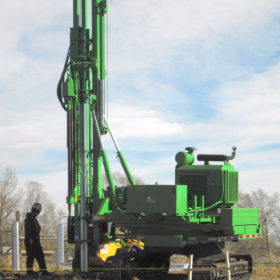
Driven piles being installed by a pile driver on the left and ground screws in the process of install by Terrasmart’s proprietary install machine on a rocky site in Nevada.
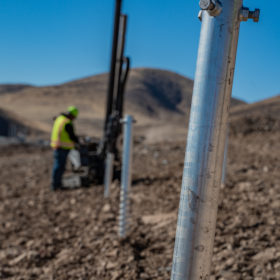
Ensuring smooth sailing in a high-refusal environment
Refusals on a project can swing both ways. But defining a standard approach to each site using a scenario with a 50% risk of refusal allows for a cost and schedule comparison between the two types of foundations.
The table below highlights the advantages of using piles in a soft environment while also showing the risks they pose in a high-refusal project. For a soft 10-MW site, piles cost $7,238 less than screws, can be installed for $200,000 less, and go in four days faster than screws. Net result: A $0.021 per watt cost advantage.
But that same 10-MW project with a 50% refusal rate tells a different story; piles are no longer an effective option. While ground screw costs and time requirements remain constant, piles cost $19,575 more in materials, $143,000 more to install, and require a whopping 24-day extension to the construction schedule. In this scenario, ground screws offer a $0.016 per watt advantage over piles.
Bear in mind that the delayed schedule has severe repercussions. When estimating the actual cost of delays, the team found that the impact on other contractors and additional ancillary services can cost up to $25,000 per week — in this case exceeding $100,000 in losses for the developer over a four-week period.
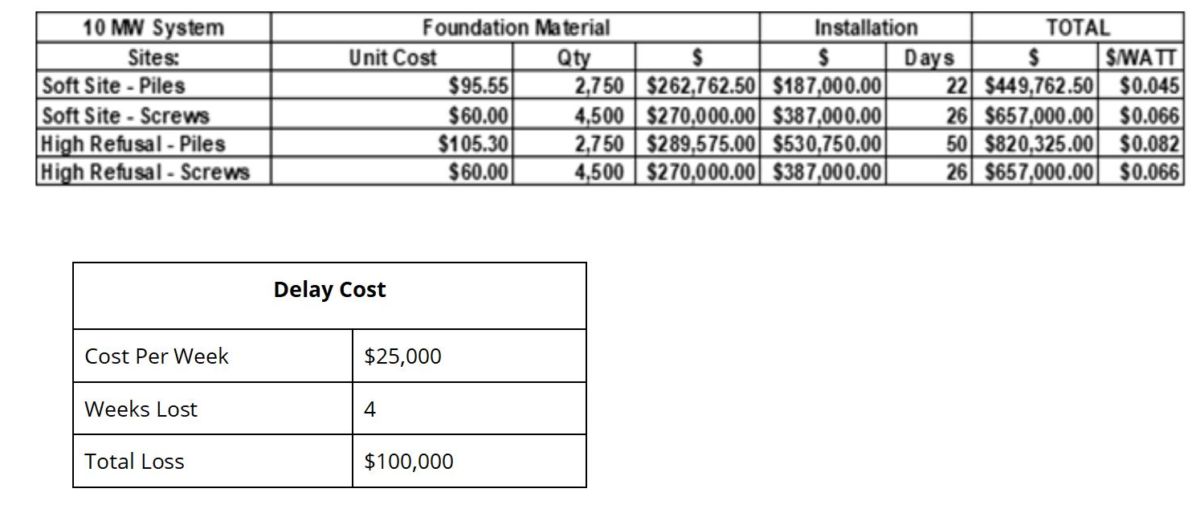
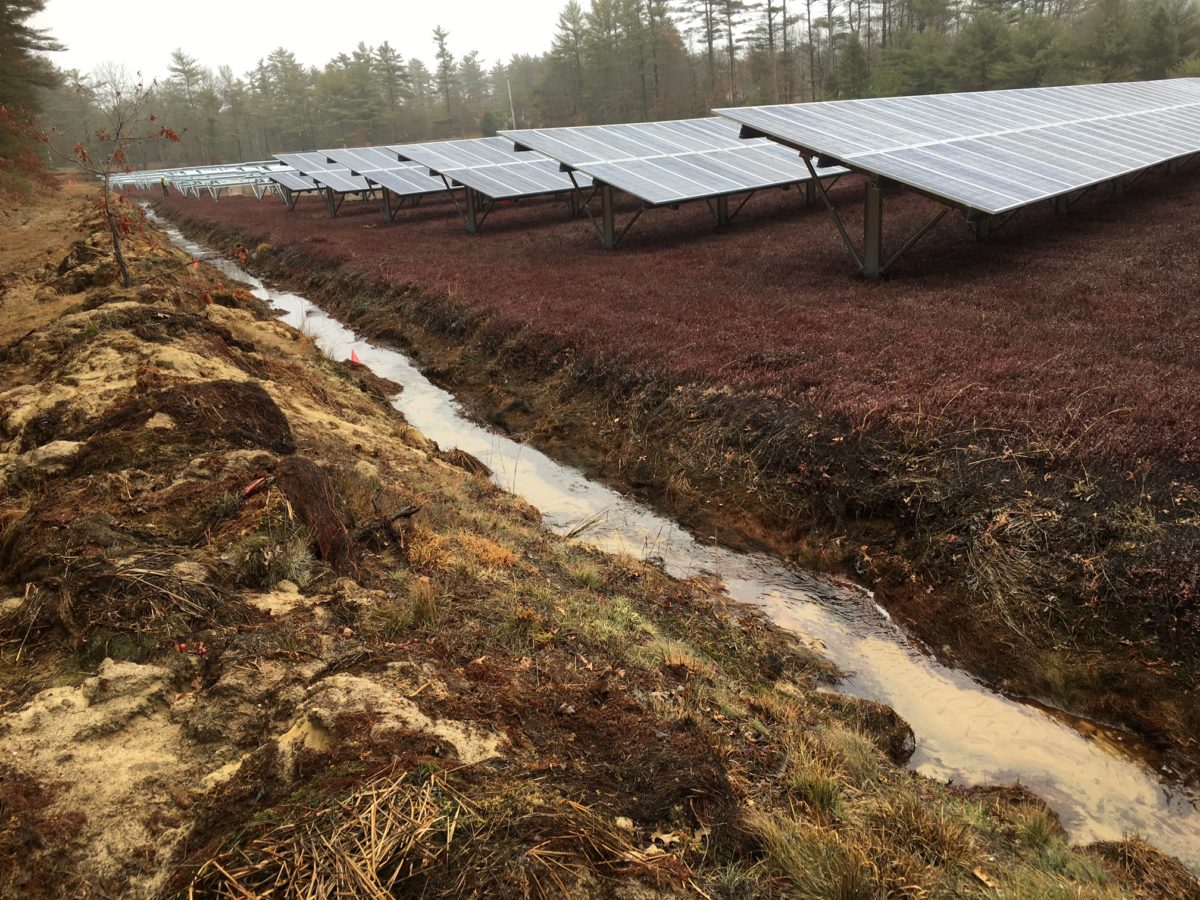
Driven pile foundation was determined best foundation to use on this cranberry bog in Carver, Massachusetts, due to the bog’s wetlands that required careful installation without damaging the cranberries’ fragile vines.
Fishing for the ideal foundation
Admittedly, a 50% refusal site is not the norm. The question then becomes: At what refusal percentage do ground screws outperform piles? And what are the implications from both a cost and schedule perspective? The final step of the study involved identifying break-even points for both cost and installation time to determine an acceptable rate of refusal.
Installation costs alone indicate that a 29% refusal rate makes a site a good candidate for ground screws. Above this break-even point, installation cost for piles would exceed the $400,000 needed to install a ground screw system.

Refusals also impact schedules. In this scenario, both the pile and the ground screw systems would require a 26-day schedule, allowing for a refusal rate of up to 7%. Beyond that break-even point, each additional 15% of pile refusals would add another day to the schedule.

Plumbing the depths to deliver strongest returns
While a 29% refusal rate is the breakeven point in this scenario, we understand that every site is different, and each customer has their own set of goals and priorities. Although there is no one-size-fits-all, sites with a 20%-30% refusal rate require geotesting and engineering expertise and a complete foundation portfolio to ensure you have the best solution for your project.
Owners, developers, and contractors can stem the tide of project risks with an objective understanding of each site’s underground profile. Look for a racking partner with a broad mounting portfolio and deep experience across various types of foundations to steer your project toward stronger returns. A partner experienced in working with a variety of subterranean profiles can ensure cost and schedule certainty, unlocking maximum value for any project.

